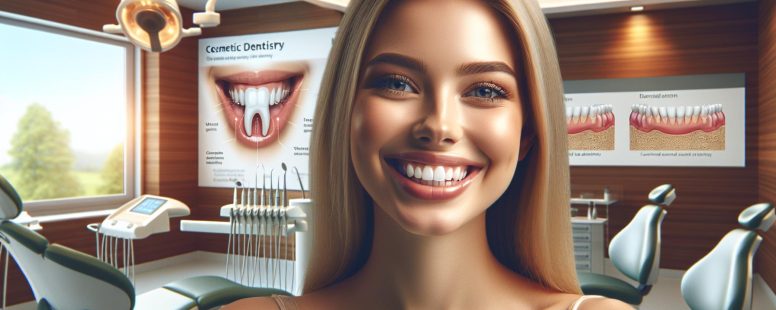Pros and Cons of Veneers: Everything You Need to Know Before Choosing Dental Veneers
Your smile is one of the first things people notice about you, so it’s no surprise that many seek ways to make it shine brighter. Veneers, those thin shells of porcelain or composite, promise to transform your teeth into a picture-perfect set. But before diving into this cosmetic solution, have you ever wondered if they’re truly worth it?
Veneers can feel like a dream come true, offering a quick fix to discoloration, chips, or gaps. Yet, beneath their polished surface lies a mix of benefits and potential drawbacks you shouldn’t overlook. Whether you’re chasing a Hollywood smile or just curious about the process, understanding both sides of veneers can help you make an informed choice.
What Are Veneers?
Veneers are ultra-thin, custom-made shells crafted to cover the front surface of your teeth. These shells are made from porcelain or composite resin materials and are bonded to your tooth to improve its appearance. Often used in cosmetic dentistry, veneers can transform your smile by resolving issues like chipped, stained, or uneven teeth.
Porcelain veneers are durable and resist stains better than resin veneers. They’re individually designed to mimic the light-reflecting properties of natural teeth, creating a realistic look. Composite veneers, on the other hand, involve less tooth enamel removal during placement and can often be applied in a single dentist visit.
If you have teeth with persistent discoloration or gaps, veneers may be one of the fastest ways to restore symmetry and brightness. For example, addressing a noticeable space between front teeth or hiding stubborn stains can significantly enhance confidence. Even though being associated primarily with aesthetics, veneers may also provide protection for damaged enamel, extending the functionality of weakened teeth.
It’s important to note, veneers are a cosmetic solution, not a restorative treatment. The process requires altering the structure of your natural teeth, which is irreversible. Hence, veneers are suitable for individuals prioritizing appearance enhancements over preservative measures.
Types Of Veneers
Veneers come in several types, each tailored to different dental needs and preferences. By understanding their specific characteristics, you can determine which option aligns best with your goals.
Porcelain Veneers
Porcelain veneers are the most durable and natural-looking option. These thin shells are made from high-quality ceramic materials, mimicking the translucence of natural teeth. Dentists often recommend them for correcting severe discoloration, gaps, or misshapen teeth.
The application involves removing a small amount of enamel, after which an impression of your teeth is taken. Since they’re custom-crafted, they provide a precise fit and seamless appearance. They’re more stain-resistant than other types, but replacement might be necessary if they chip or crack due to improper care.
Composite Veneers
Composite veneers offer a more affordable and quicker alternative. They are crafted from resin composite material, which is sculpted directly on your teeth for immediate results. While they require less enamel removal, they’re not as long-lasting as porcelain veneers.
These veneers can address minor chips, cracks, or gaps. But, their lifespan is about 5–7 years, significantly shorter than porcelain veneers’ average of 10–15 years. If you have concerns about durability, periodic maintenance or replacement becomes essential.
Other Types Of Veneers
Other options include no-prep veneers and removable veneers. No-prep veneers, such as Lumineers, lie on the enamel’s surface without extensive reshaping. This makes them less invasive but may feel bulky compared to traditional options.
Removable veneers, sometimes called clip-on veneers, provide a non-permanent solution. These can be worn during special occasions or temporarily cover imperfections. They’re less costly, but the aesthetic and functional results might not match permanent alternatives.
Pros Of Veneers
Veneers provide multiple cosmetic and functional advantages for those seeking an enhanced smile. Their versatility makes them a popular choice for addressing various dental imperfections.
Improved Aesthetics
Veneers transform your smile by covering imperfections like discoloration, chipped edges, and uneven tooth shapes. For instance, if you have intrinsic stains—caused by medication or genetics—they’re hard to remove through whitening treatments, but veneers effectively camouflage them. These custom-made shells align and brighten teeth, giving a natural yet flawless appearance.
Stain Resistance
Porcelain veneers resist stains from coffee, tea, and tobacco better than natural tooth enamel. Unlike normal teeth, which gradually absorb pigments, the glazed surface of porcelain maintains its pristine color over time. Even after years of use, your veneers stay whiter compared to unprotected teeth.
Minimally Invasive Procedure
The veneer application process preserves much of your teeth’s natural structure. Typically, only 0.5 mm of enamel is shaved for porcelain veneers, significantly less than the amount required for full crowns. With composite veneers, even less preparation is needed. This conservative approach minimizes discomfort.
Durability And Longevity
Porcelain veneers last 10–15 years with proper care. These robust shells resist wear and chipping under normal chewing conditions. For example, eating hard foods like nuts won’t damage their structure if you’re mindful. This long lifespan outweighs the upfront investment over time. Composite veneers, while less durable, still provide a practical 5–7-year benefit when maintained properly.
Cons Of Veneers
While veneers offer significant cosmetic advantages, they come with limitations and risks you should evaluate before committing.
Cost Considerations
Veneers are often expensive, with porcelain veneers costing $925–$2,500 per tooth and composite veneers ranging from $400–$1,500 per tooth. Insurance plans usually don’t cover veneers since they’re classified as cosmetic treatments. Depending on the number of veneers needed, costs can quickly escalate, making this solution inaccessible for those on a tight budget.
Potential For Sensitivity
Veneers can cause tooth sensitivity, especially in the initial weeks after placement. The enamel removal process exposes the underlying dentin, which is more sensitive to temperature and pressure changes. You might notice discomfort when consuming hot drinks like coffee or biting into cold foods such as ice cream. Sensitivity can persist if your veneers or adhesive are improperly fitted.
Irreversible Procedure
The process requires permanent removal of enamel, making it irreversible. Your natural teeth can’t be restored if you choose to remove the veneers in the future. This means you’re committing to maintaining veneers or seeking alternative solutions permanently. For instance, if the veneers break or fail, replacement becomes a mandatory expense.
Risk Of Damage Over Time
Even though veneers are durable, they can chip, crack, or discolor over time. Porcelain veneers, while strong, aren’t immune to damage from hard foods or habits like teeth grinding. Composite veneers are less resistant and have a shorter lifespan, requiring replacements every 5–7 years on average. Poor oral hygiene can also lead to discoloration or decay in the natural teeth beneath the veneers, jeopardizing their longevity.
How To Decide If Veneers Are Right For You
Determining if veneers fit your needs involves understanding their benefits, limitations, and long-term effects. Evaluating personal goals, current oral health, and financial capacity is key.
Factors To Consider
Examine your dental concerns to see if veneers align with your goals. Issues like severe discoloration, uneven tooth shapes, or gaps are commonly addressed with veneers. For instance, intrinsic stains that resist whitening treatments make veneers a viable option.
Assess durability against your lifestyle. Porcelain veneers last 10–15 years, but they can chip under pressure, such as nail-biting or chewing hard substances. Composite veneers offer a shorter lifespan of 5–7 years but might be more suitable if you’re seeking a quick cosmetic fix.
Consider the cost range. Porcelain veneers can cost $925–$2,500 per tooth, while composite veneers range from $400–$1,500. Budget constraints may guide you towards either type or alternative treatments like bonding or whitening.
Understand maintenance requirements. Veneers require consistent oral hygiene and precautions against potential damage. Although stain-resistant, veneers can’t prevent surrounding teeth from discoloration, leading to visible contrast over time.
Consultation With A Specialist
Schedule a consultation with a qualified cosmetic dentist. An expert evaluates your oral health, discusses design options, and recommends suitable veneer types. For example, severe enamel erosion might limit your eligibility for traditional veneers.
Ask questions about pre-treatment preparations. Some procedures demand enamel removal, which is irreversible. In cases where you’re hesitant, no-prep veneers offer a less invasive option.
Discuss long-term impacts. Enquire about adjustments, risks of sensitivity, and follow-up visits. A well-informed discussion ensures expectations align with results.
Seek a dentist’s portfolio of past veneer cases. Real-life transformations help visualize possibilities and set realistic outcomes for your smile goals.
Conclusion
Choosing veneers is a highly personal decision that requires careful consideration of both their benefits and limitations. They can transform your smile and boost your confidence, but they also come with financial and long-term commitments.
By understanding the options available and consulting with a skilled cosmetic dentist, you can determine if veneers align with your dental goals and lifestyle. Take the time to weigh your priorities and explore all aspects before committing to this cosmetic enhancement.







